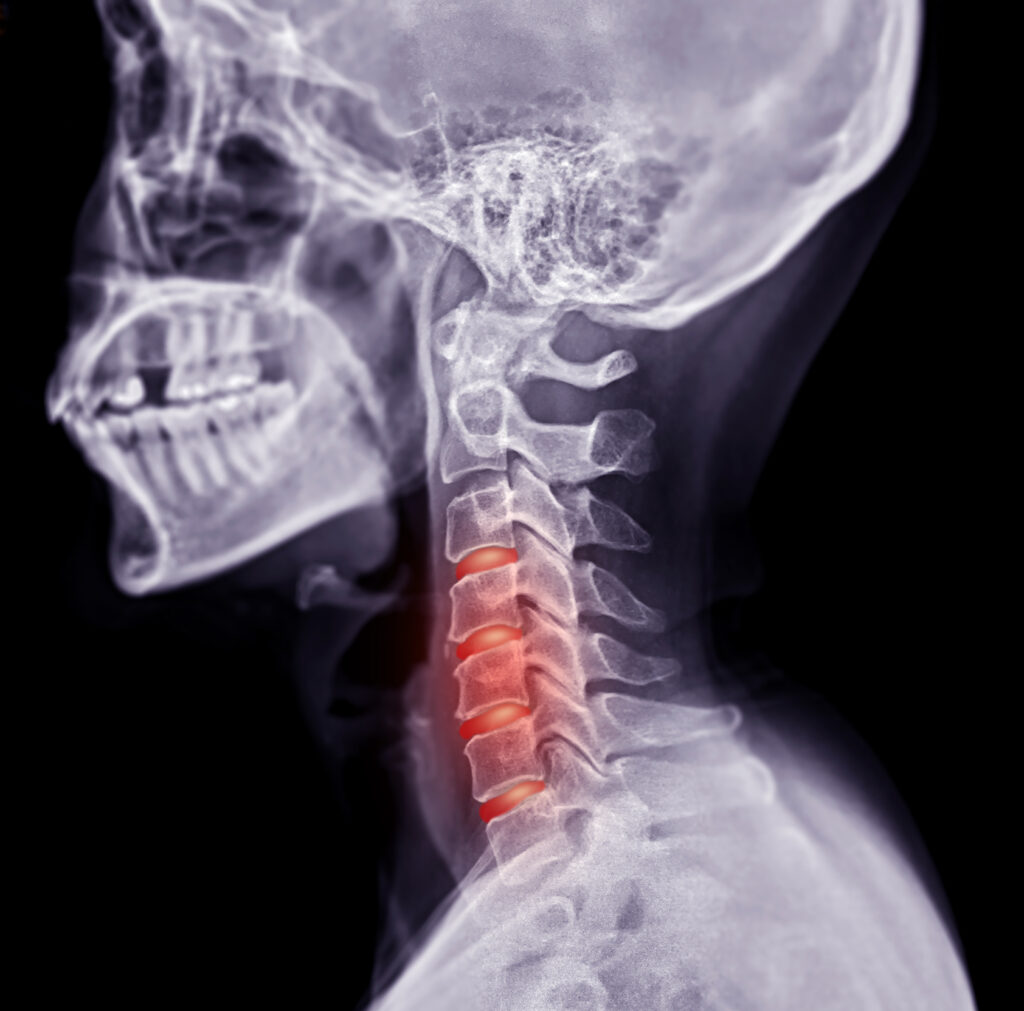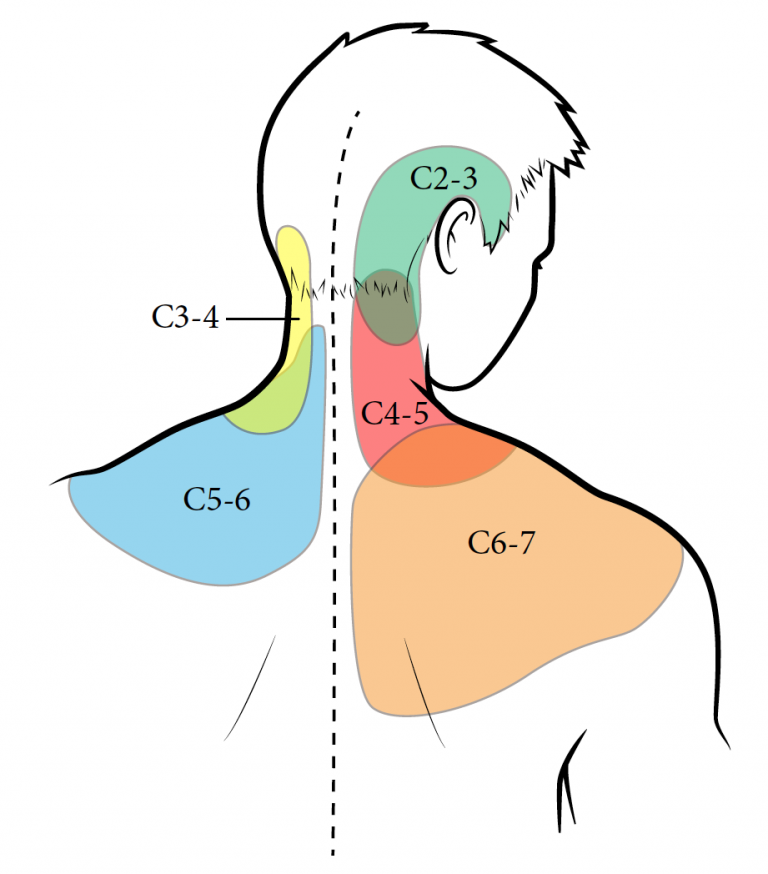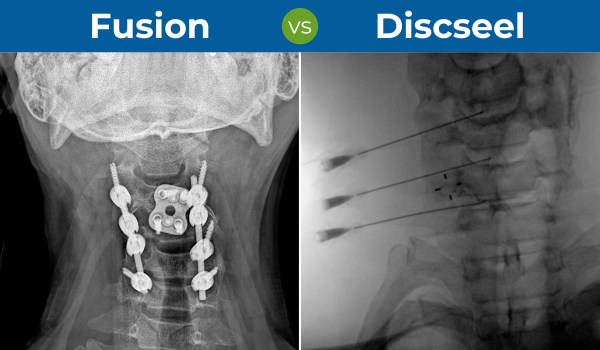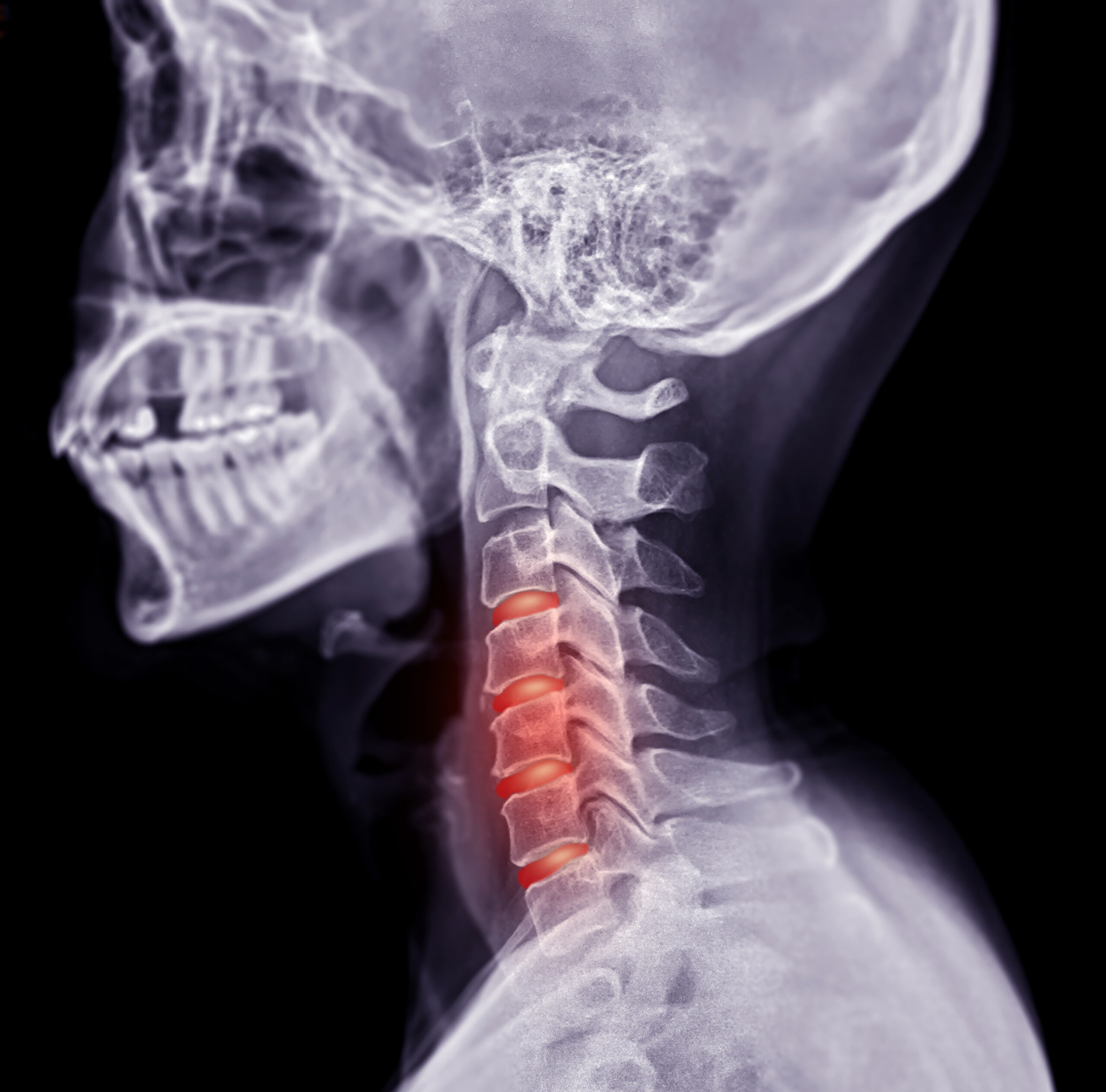Neck pain is a widespread issue affecting millions of people worldwide. Many individuals suffer from chronic neck pain and cervical radiculopathy due to degenerative cervical discs, bulging cervical discs, and leaky disc syndrome. Fortunately, the Discseel procedure combined with PRP (Platelet-Rich Plasma) injections offers a non-surgical alternative that can provide long-lasting relief by addressing the root causes of pain and degeneration.
Understanding Degenerative and Bulging Cervical Discs
Cervical discs are soft, rubbery structures that sit between the vertebrae in the cervical spine. They provide flexibility and cushioning for the neck. Each disc is composed of an outer layer made of rings of collagen fibers (the annulus) and an inner gel-like core (the nucleus). Unlike lumbar discs, cervical discs also have collagen fibers intertwined within the nucleus, making them structurally unique.
Factors such as injuries, poor posture, and spinal weakness contribute to cervical disc degeneration and bulging. Because cervical discs have a limited blood supply, their ability to heal on their own is poor. Damaged and degenerated discs can lead to chronic neck pain and cervical radiculopathy (nerve pain shooting down to the shoulder and arm.)

How Degenerative, Bulging, and Herniated Cervical Discs Cause Neck Pain and Radiculopathy
Leaky Disc Syndrome: A Major Cause of Chronic Neck Pain
When cervical discs become damaged and degenerated, they develop cracks and tears in the annulus. These tears allow inflammatory proteins (think of “chili pepper sauce”) to leak out of the disc, triggering a cascade of neck and arm symptoms. This is known as leaky disc syndrome.
Leaky disc syndrome leads to:
- Severe inflammation that causes persistent neck pain, muscle spasms, and headaches.
- Nerve irritation leading to cervical radiculitis (pain and numbness in the arm, shoulder, and hand).
- Weakening of the disc structure, accelerating the breakdown of the cervical spine.
In the mature spine, it is not uncommon to have some small annular tears in the cervical discs. Studies show that while not all annular tears cause pain, all painful degenerative discs do indeed exhibit annular tears and leakage. On average, individuals with chronic neck pain have at least three leaky discs that may be contributing to their neck discomfort.
Inflammation and Hypersensitivity: The Painful Degenerated Discs
Researchers have identified two other reasons why degenerative discs can cause chronic neck pain: an abundance of pain-sensing nerves and increased disc inflammation.
In a 2019 study in the Journal of Pain, neurosurgeons compared samples of painful degenerated cervical discs to non-painful and normal discs in patients undergoing cervical fusion surgery. They found that painful degenerative discs with annular tears have an increased presence of pain-sensing nerves. These nerves have grown deep into the damaged disc layers, increasing pain sensitivity. This nerve in-growth was absent in non-painful and healthy discs (Wu 2019).
In a 2024 study published in Orthopaedic Surgery, spine surgeons again compared disc samples in patients undergoing disc replacement surgery. They found that painful degenerated discs had increased levels of inflammatory proteins compared to non-painful or healthy discs (more “chili pepper sauce”). They also identified that these inflammatory proteins further promote disc breakdown and degeneration (Kang 2024).
In both studies, the surgeons identified C5-6 as the most common painful cervical disc, followed by C4-5 and C6-7. Additionally, these and other studies successfully mapped the characteristic neck pain patterns associated with cervical disc pain (Fig 2).

Cervical Annular Tears, Disc Bulge and Herniation: A Source of Nerve Pain
Annular tears and disc degeneration are key contributors to the weakening of cervical discs, leading to structural instability and nerve-related neck and arm pain. The annulus, made of strong collagen fibers, provides the essential support that keeps the disc and cervical spine stable. As the annular fibers weaken and tear, the disc loses its ability to maintain its shape and function, leading to bulging discs—where the disc extends beyond its normal boundaries.
In cases where the annular tears are more severe, the inner gel-like core (nucleus) can leak out of the disc, similar to toothpaste being squeezed from a tube. This is known as a cervical disc herniation.
A herniated or bulging disc can compress nearby cervical nerve roots, leading to symptoms such as:
- Neck pain that may worsen with movement.
- Pain radiating down the shoulder, arm, or hand (cervical radiculopathy).
- Muscle weakness, numbness, or tingling in the upper limbs.
If left untreated, chronic compression and inflammation of the nerves can lead to significant nerve damage, resulting in long-term pain, reduced function, and even disability.
Schedule Your Consult with a Neck Pain Specialist
The Best Non-Surgical Treatment for Degenerative and Bulging Cervical Discs: Discseel Plus PRP
For those seeking relief without undergoing spinal surgery, the Discseel procedure combined with PRP injections offers an effective, minimally invasive treatment of the cervical spine.
What is the Discseel Procedure?
The Discseel procedure is an innovative treatment that uses fibrin, a natural biological glue, to seal annular tears and stimulate disc regeneration. Fibrin is an FDA-approved biological sealant commonly used in medical and surgical procedures.
During the Discseel procedure:
- Fibrin glue is injected into the cervical discs under fluoroscopic (X-ray) guidance.
- The fibrin fills the cracks and seals the leaky discs within minutes.
- Over time, the fibrin stimulates the production of healthy collagen and disc cells, repairing annular tears and reinforcing the disc’s natural structure.
- The fibrin also neutralizes inflammatory proteins, reducing disc pain and inflammation.
- The thick fibrin glue also covers the ingrown pain-sensitive nerves, reducing nerve irritation and hypersensitivity.
- Over several months, the health of the disc is gradually restored, improving the strength and stability of the cervical spine.

How PRP Enhances Discseel Results
While Discseel focuses on sealing and regenerating the disc, PRP (Platelet-Rich Plasma) injections provide additional healing for the surrounding spinal structures (facet joints, ligaments, and muscles). PRP is derived from the patient’s own blood and contains high concentrations of growth factors that stimulate healing and reduce inflammation.
PRP injections of the cervical spine are used to:
- Promote healing and tissue regeneration.
- Strengthen muscles and ligaments to improve spinal stability.
- Reduce inflammation of facet joint arthritis and cervical nerve roots.
- Enhance overall spinal health and function and prevent future degeneration.
A Comprehensive Approach to Healing Cervical Discs
For optimal results, treating the entire spinal unit is essential. A comprehensive approach includes:
- Discseel to repair annular tears and seal leaky discs.
- PRP injections to strengthen ligaments, muscles, and facet joints.
- Nerve hydrodissection to reduce nerve inflammation and pain.
- Targeted rehabilitation exercises to restore spinal stability and function.
- Lifestyle modifications, such as posture correction and ergonomic adjustments, to support long-term spinal health.
Why Choose Discseel Plus PRP Over Surgery?
Traditional spinal surgeries, such as spinal fusion and disc replacement, are invasive procedures with serious risks and potential collateral damage. Spinal surgery can lead to some unwanted outcomes like:
- Adjacent segment disease (accelerated degeneration of the discs above and below).
- Loss of mobility and flexibility.
- Long recovery periods and significant post-surgical risks.

In contrast, Discseel Plus PRP offers:
- A minimally invasive treatment with no need for hardware or spinal fusion.
- A natural regenerative process that strengthens and heals the discs.
- A treatment approach that preserves spinal motion while reducing pain and inflammation.
- A significantly lower risk of long-term complications compared to surgery.
Conclusion
Chronic neck pain and cervical radiculopathy caused by degenerative and bulging cervical discs no longer have to lead to invasive surgery. The Discseel procedure combined with PRP injections offers an advanced, non-surgical solution that repairs, regenerates, and restores spinal health. By addressing leaky disc syndrome, inflammation, and nerve hypersensitivity, this treatment provides long-lasting relief and improves overall spinal function.
If you suffer from chronic neck pain or cervical radiculopathy, consider Discseel Plus PRP as a cutting-edge alternative to traditional fusion and disc replacement surgery, allowing you to heal naturally and regain a pain-free life.
Schedule Your Consult with an Neck Pain Specialist
References:
Wu, Bing, Liang Yang, and Baogan Peng. “Ingrowth of nociceptive receptors into diseased cervical intervertebral disc is associated with discogenic neck pain.” Pain Medicine 20.6 (2019): 1072-1077.
Kang, Xinjian, et al. “Increased expression of inflammatory cytokines and discogenic neck pain.” Orthopaedic Surgery 16.1 (2024): 227-233.
Weisshaar, Christine L., et al. “The potential for salmon fibrin and thrombin to mitigate pain subsequent to cervical nerve root injury.” Biomaterials 32 (2011): 9738e9746.
Peng, Baogan, and Nikolai Bogduk. “Cervical discs as a source of neck pain. An analysis of the evidence.” Pain Medicine 20.3 (2019): 446-455.
Slipman, Curtis W., et al. “Provocative cervical discography symptom mapping.” The Spine Journal 5.4 (2005): 381-388.
Buser, Zorica, et al. “Biological and biomechanical effects of fibrin injection into porcine intervertebral discs.” Spine 36.18 (2011): E1201-E1209.

